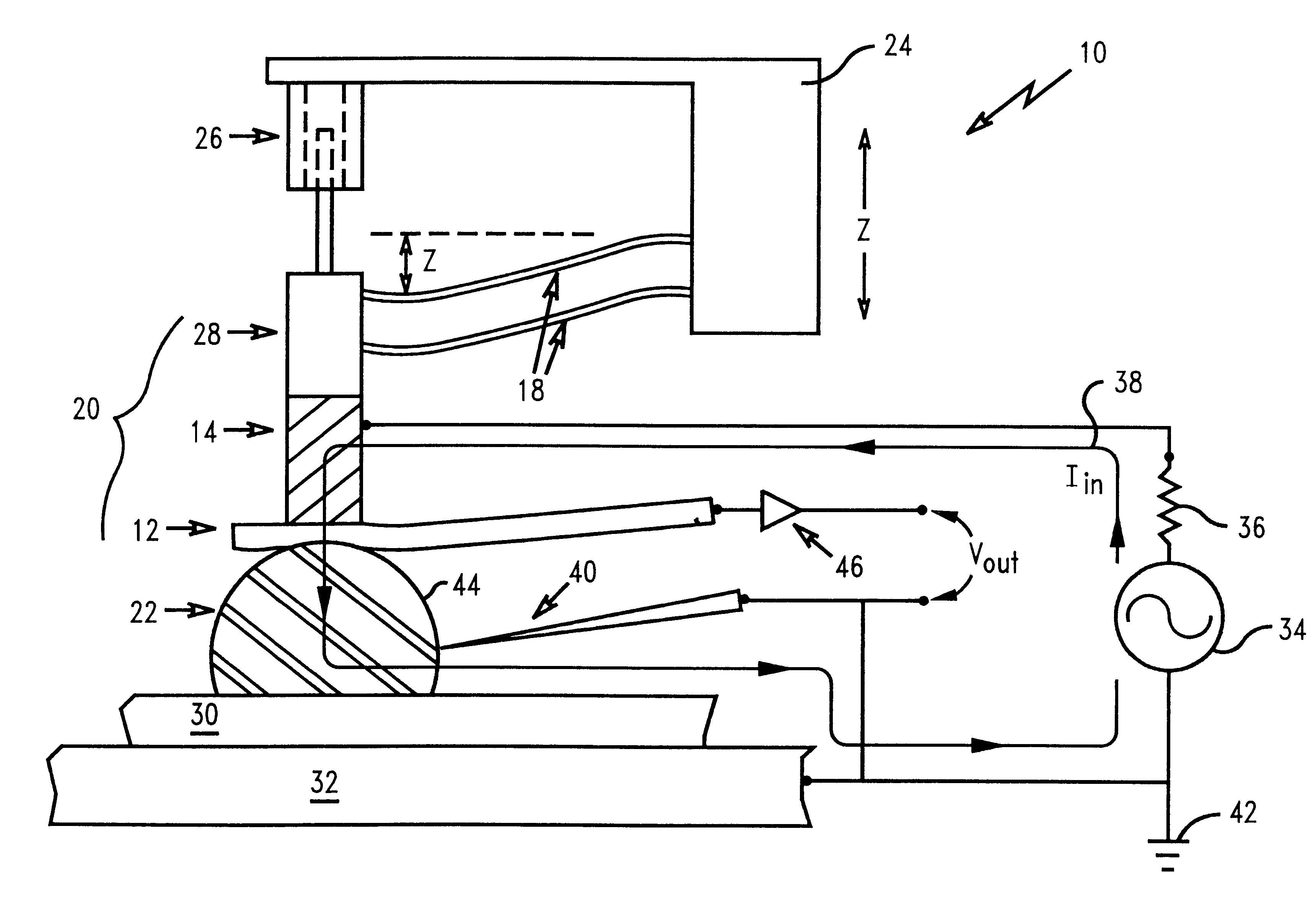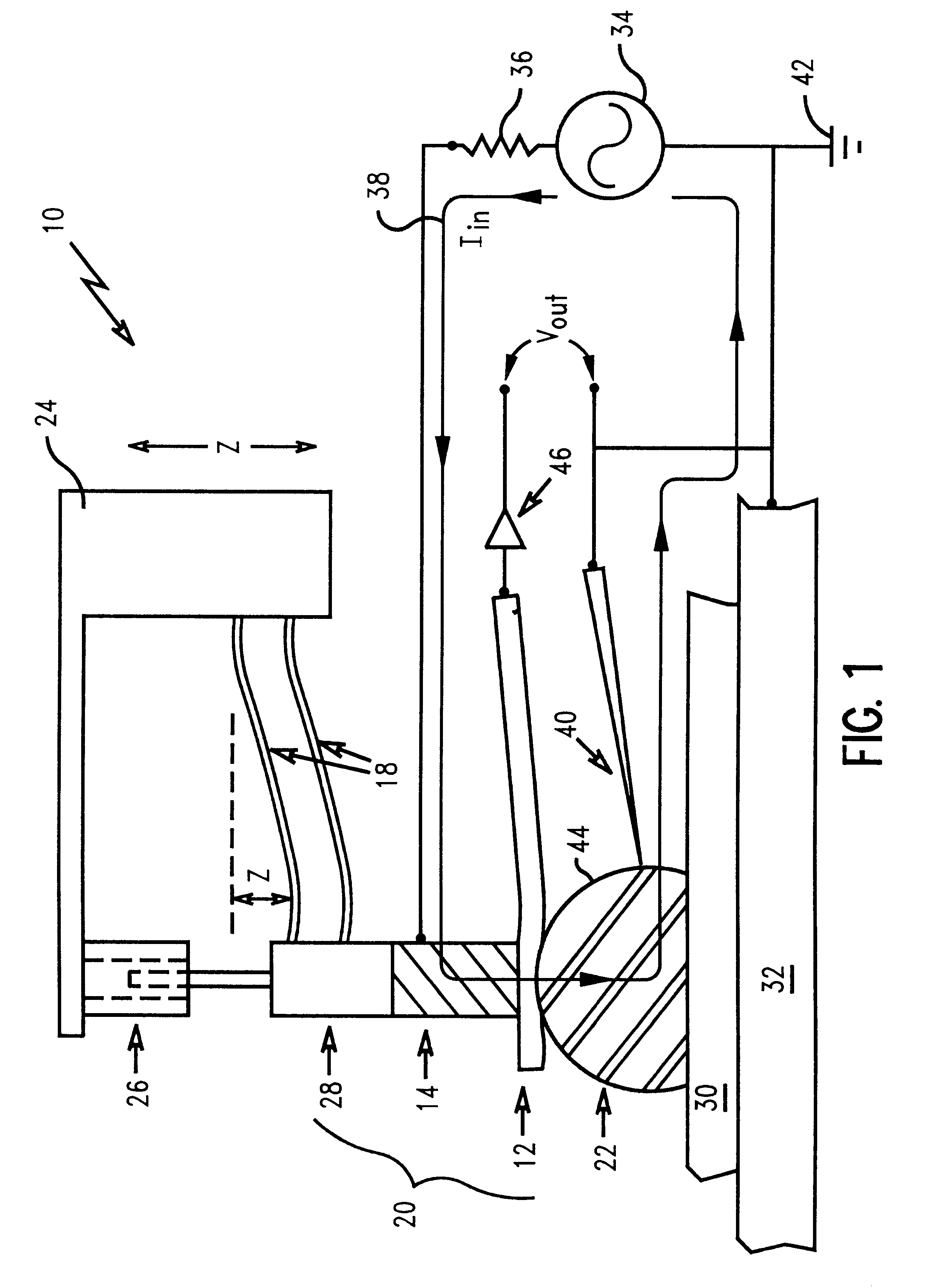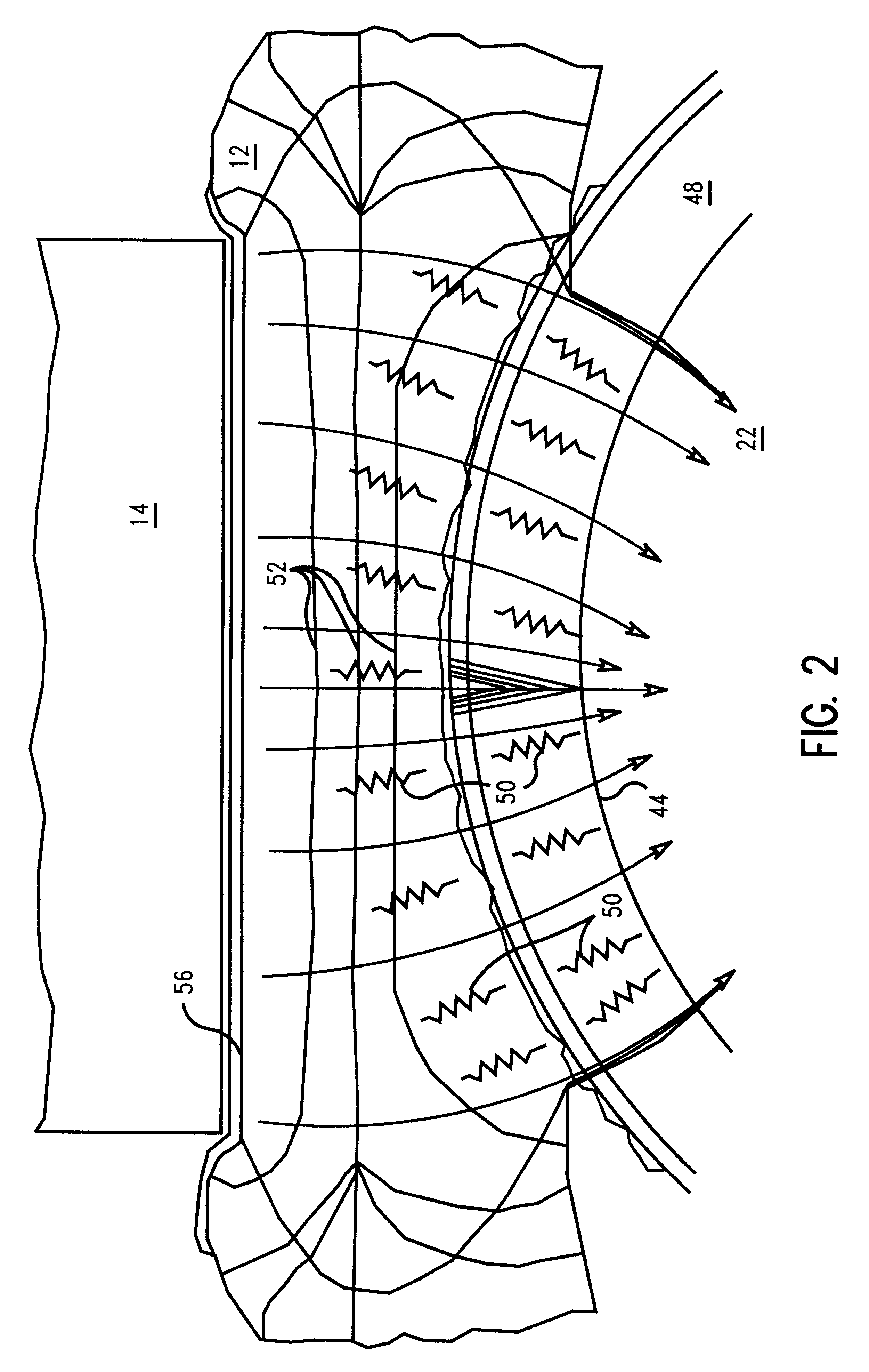Method of measuring oxide thickness during semiconductor fabrication
a technology of semiconductor wafers and thin insulating layers, which is applied in the direction of individual semiconductor device testing, semiconductor/solid-state device testing/measurement, instruments, etc., can solve the problems of oxide build-up on solder joints, difficult to minimize or eliminate, and compromise the chip's mechanical integrity
- Summary
- Abstract
- Description
- Claims
- Application Information
AI Technical Summary
Benefits of technology
Problems solved by technology
Method used
Image
Examples
Embodiment Construction
)
In describing the preferred embodiment of the present invention, reference will be made herein to FIGS. 1-5 of the drawings in which like numerals refer to like features of the invention. Features of the invention are not necessarily shown to scale in the drawings.
Simplicity and test speed provide unique advantages over the existing prior art for measuring oxide layer thickness in-situ during wafer fabrication. A method of utilizing the measurement of common electrical parameters, and correlating these measurements to known deviations in oxide thickness, provides a low-cost, expeditious approach for monitoring oxide films.
Residual oxide films build-up on solder joints during fabrication with the detrimental effect of prohibiting wetting or solderability, and insulating the electrically conductive solder joint. It is necessary for manufacturers to measure this oxide build-up accurately, and in real-time, during semiconductor wafer processing. Measuring both the capacitive and reacti...
PUM
 Login to View More
Login to View More Abstract
Description
Claims
Application Information
 Login to View More
Login to View More - R&D
- Intellectual Property
- Life Sciences
- Materials
- Tech Scout
- Unparalleled Data Quality
- Higher Quality Content
- 60% Fewer Hallucinations
Browse by: Latest US Patents, China's latest patents, Technical Efficacy Thesaurus, Application Domain, Technology Topic, Popular Technical Reports.
© 2025 PatSnap. All rights reserved.Legal|Privacy policy|Modern Slavery Act Transparency Statement|Sitemap|About US| Contact US: help@patsnap.com



